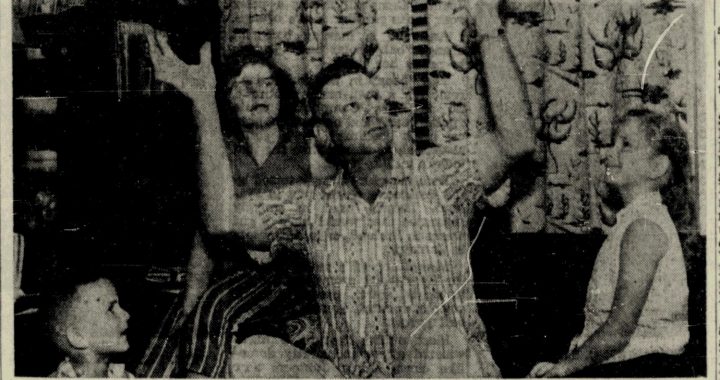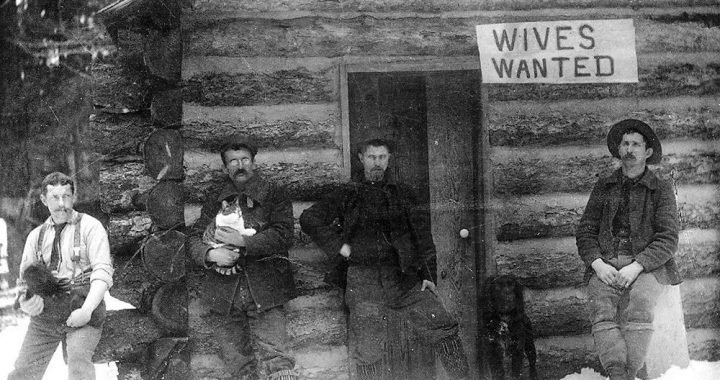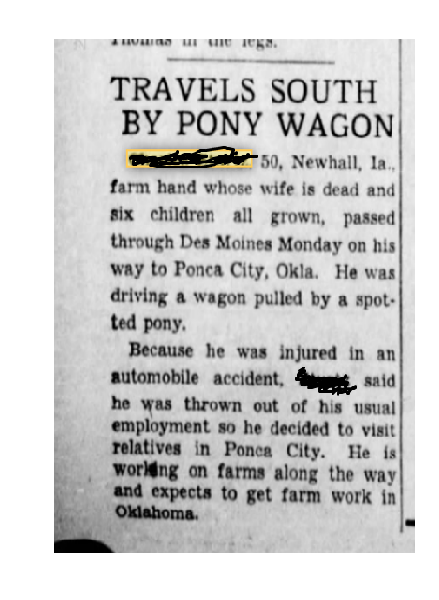
Cedar Rapids Gazette
On Saturday, May 31, 1958 two separate storm systems raced across Iowa causing a wide range of destruction. The headline from the Cedar Rapids Gazette on the day after the storms is shown above. According to the Gazette, “A howling windstorm, accompanied by rain and hail swept across Eastern Iowa…” The winds caught boaters and swimmers at Rock Creek Lake between Newton and Grinnell unaware and at least one person was drowned. Hailstones the size of baseballs struck Oelwein, Edgewood and the surrounding areas. Dysart, Walker and the rural area around Toledo suffered tornado damage. Strawberry Point reported 4.5 inches of rain in a two hour period. In the Norma Anders Library in Dysart, there is set of newspaper clippings showing how the storm affected this small town. It is not clear what paper these clippings are from. What follows is a retelling of their account of that day.
“Dysart Hit Hard as Tornado Winds Rip Building, Fell Trees”

Map of Dysart With Writers Best Recall of Location of Homes and Businesses
Paul Wieck Gives His Eyewitness Report
“There wasn’t time to get scared said Paul Wieck after he witnessed the cyclonic fury of the Saturday noon storm which ripped open two Dysart business building as he stood in the office of one of them. Paul was in the driveway of the Wieck Feed and Livestock building at the height of the storm and saw the roof lifted off the long Farmers Lumber company building across the street. He then stepped into the Wieck office building and found himself looking out of an office without a front.”
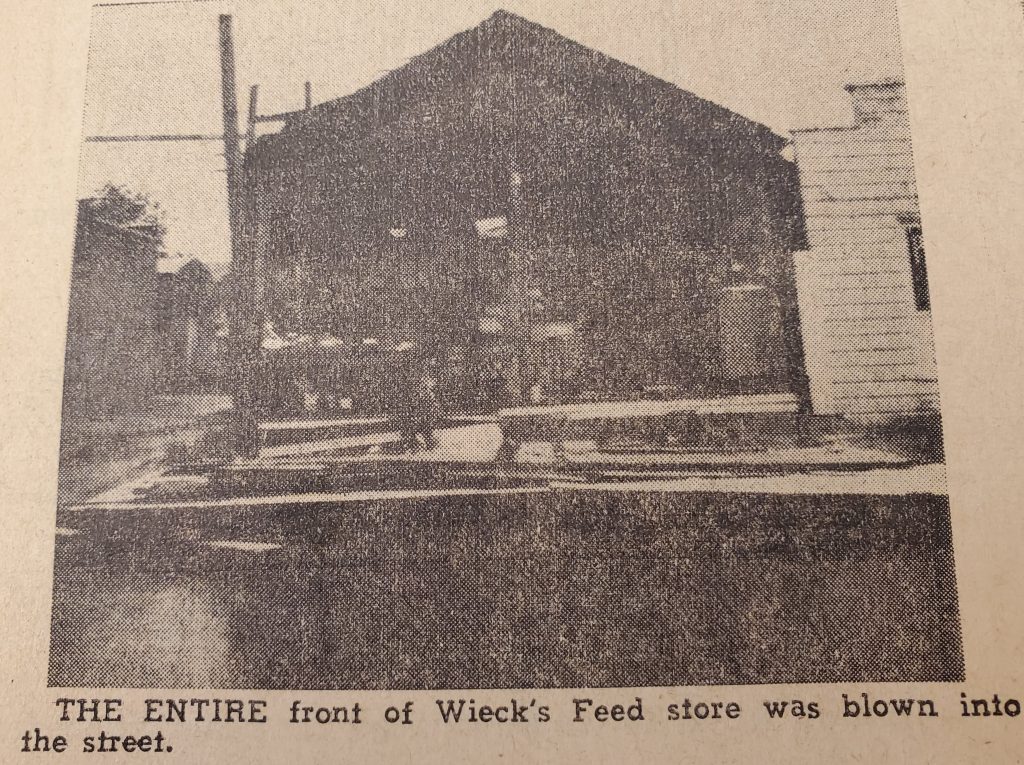
“In those few seconds of devastation, the front of the Wieck office was torn loose and flattened on west Wilson street. Paul heard nothing of its going as the roar of the winds drowned all other sounds. Had he been sitting at his desk, he might have been dumped outside with the broken boards of the front. Total damage to the building and stock was estimated at about $2,000 by Ernest Wieck.”
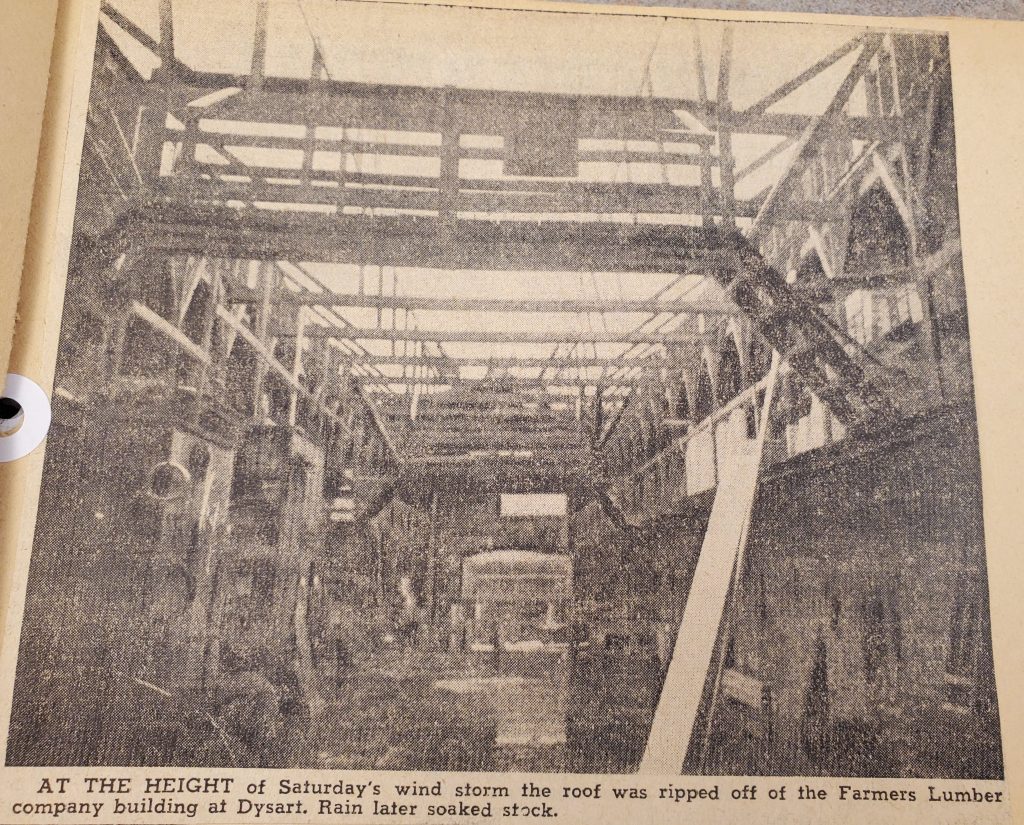
The Storm Came From the West
“It was 15 days short of a year since a similar twister swooped into Dysart on practically the same path and damaged some of the same buildings. This year’s disaster struck on a Saturday too. It was shortly after 12:30 p.m. when the storm hurtled in from the west. Cutting a swath of destruction down Highway 8 from Traer…”
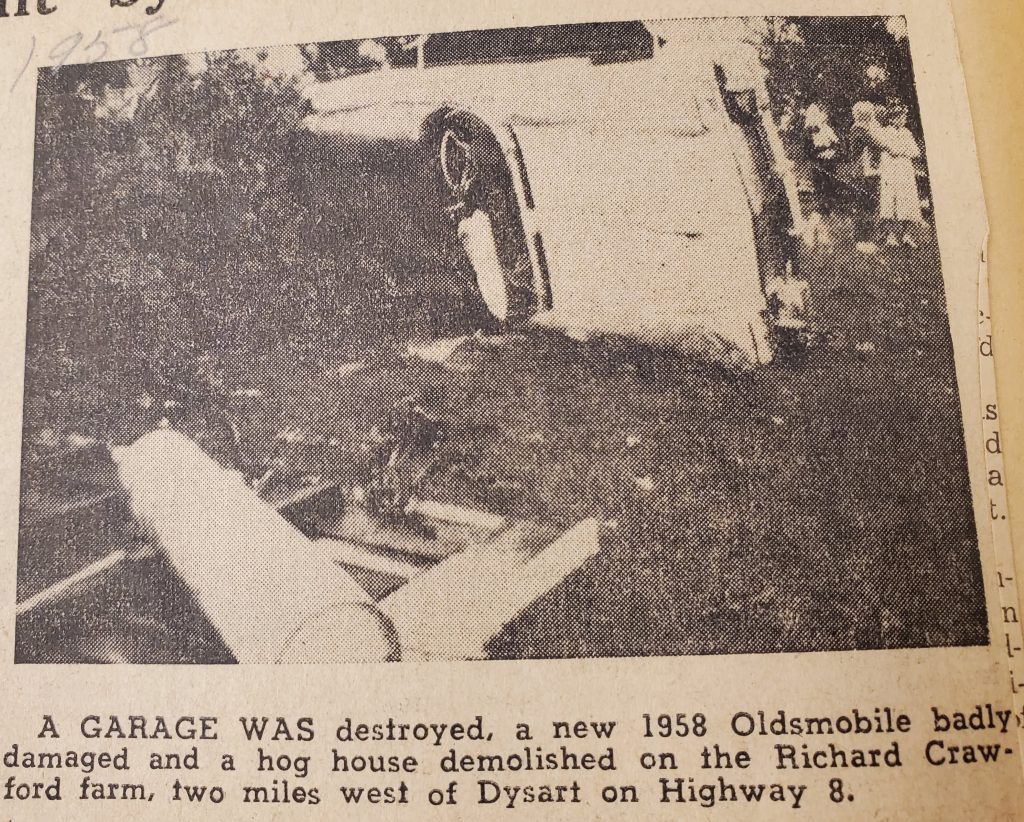
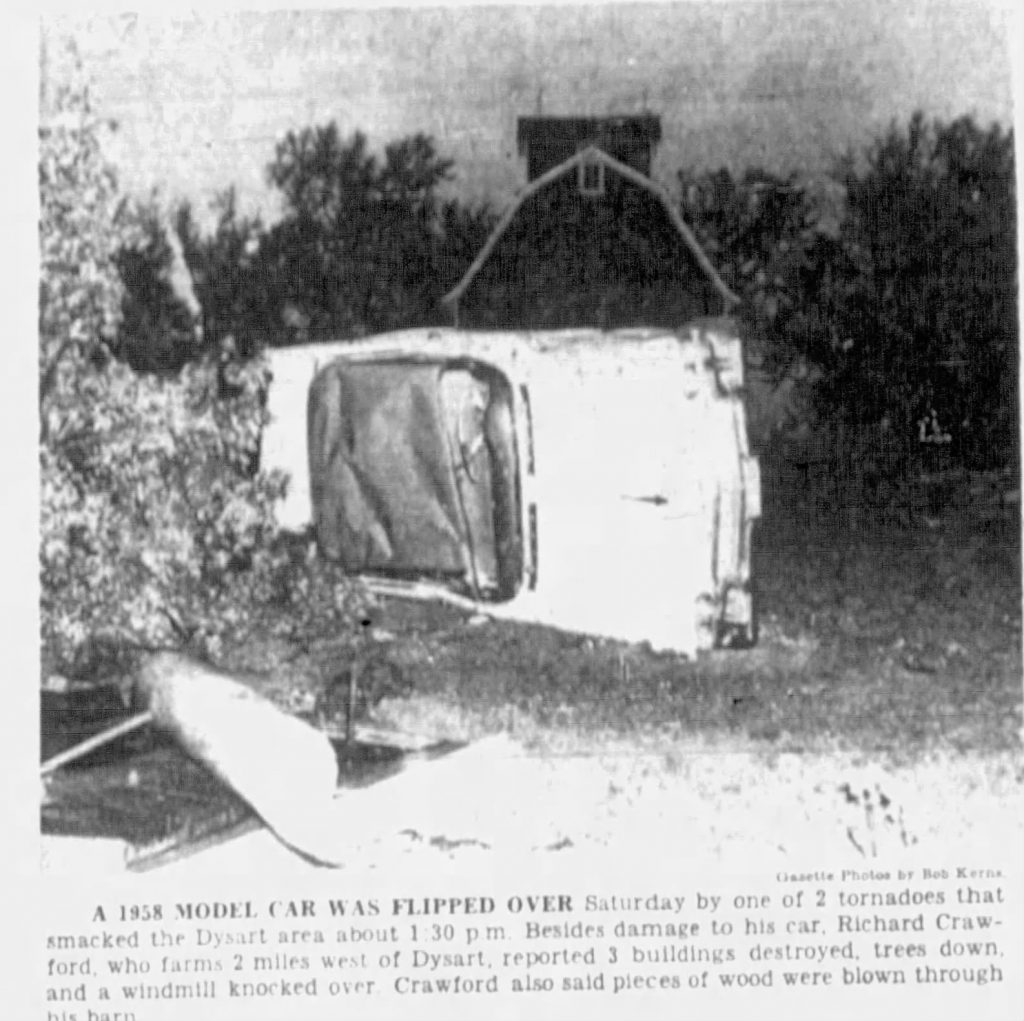
Cedar Rapid Gazette June 2, 1958
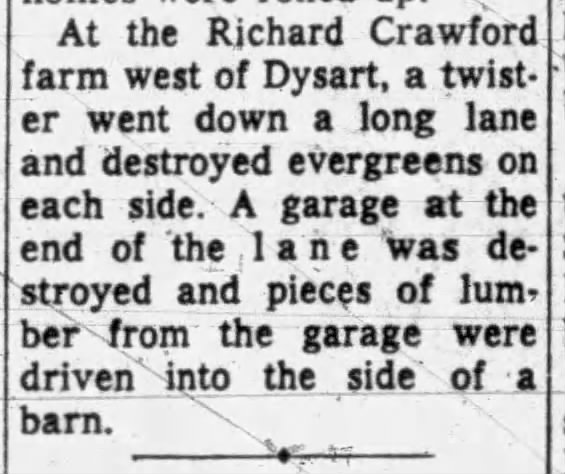
Des Moines Register June 1, 1958

Traveling Down Clark and Wilson Streets
“…the wind struck first at the Mrs. Martha Schulz home and roared on down Wilson street. Huge trees were twisted in a giant grip, torn from their moorings and tossed aside. Felled were friendly shade trees at the F.C. Lewis, Ernest Wieck, Alvin Schutt, and John Burhenn homes. A massive tree crushed the vacant house on west Wilson owned by Mrs. Gertie Cone.
The Bob Bohnsack family saw the black clouds close in, accompanied by a driving rain. As they headed for the their basement, a giant tree toppled against the front porch of their home, tearing it from the house and snapping the posts. Their garage rose straight in the air for about 10 feet, then was whipped east and dashed against the neighboring homes of Floyd Tuttle and Jack Fordice.”
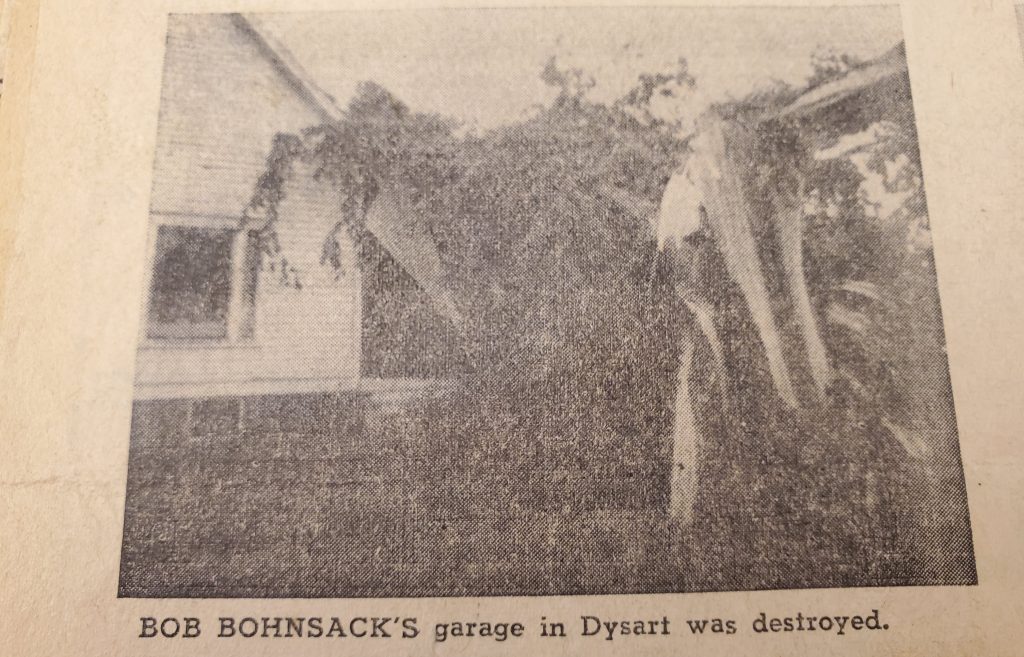
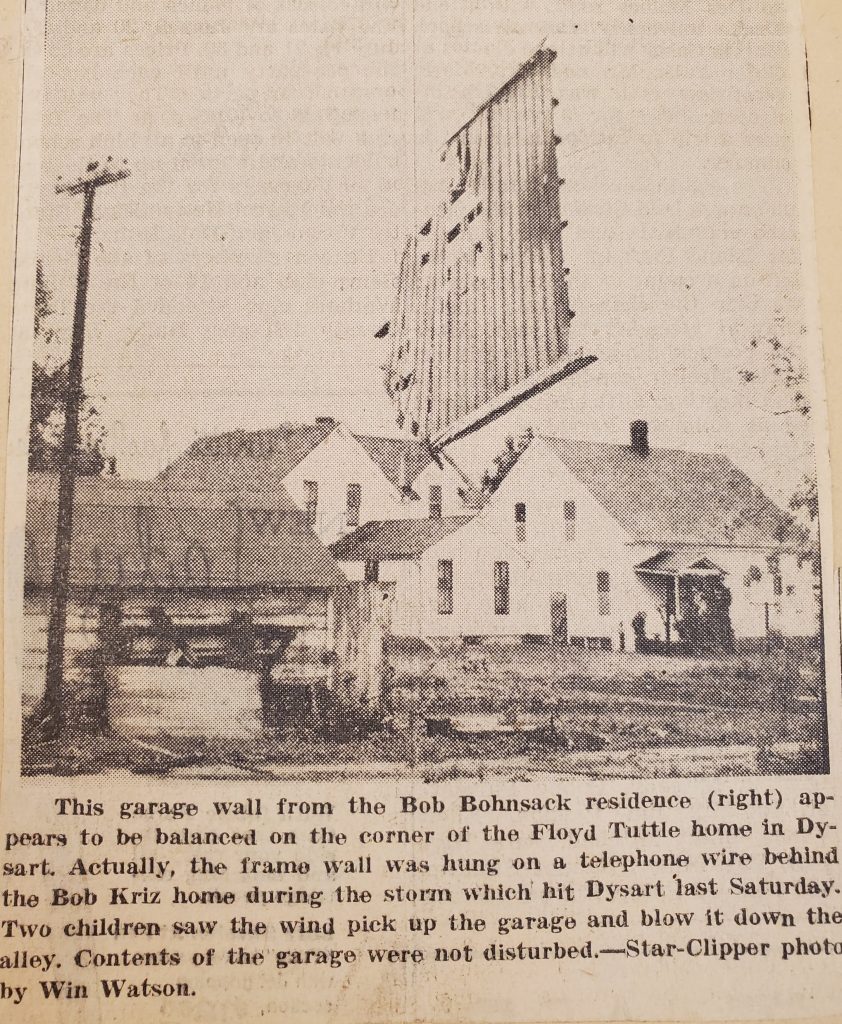
“In the same vicinity, three big trees crashed to the ground at Ed Gleim residence and one in front of Gerald Dunlavey’s. A television aerial was ripped from atop the Roy Hahn home and deposited several blocks away on the roof of the Bader grocery. The garage was flattened on the Bill Schultz property. A metal awning was torn from the Mrs. Hilda Jansen home and dropped behind the Stein Tavern.”
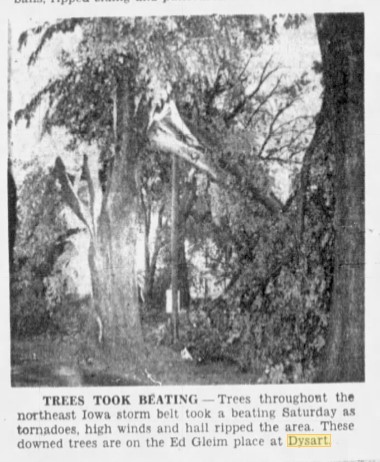
Cedar Rapids Gazette June 2, 1958
Moving Into the Business District
“Total destruction was the fate of the cement block building on west Wilson owned by the Evergreen Hatchery. This structure simply exploded, cutting wires at the adjoining electrical sub-station that sputtered dangerously.”
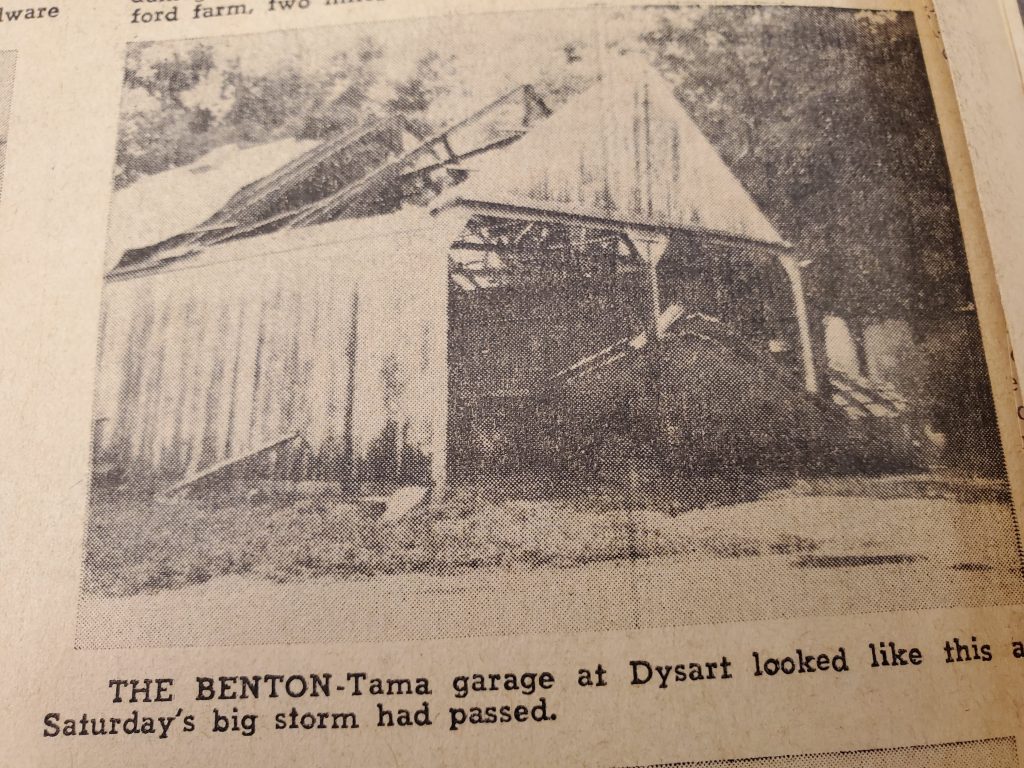
“Ray Baker was caught in this building as it was demolished. He had just driven a truck inside and dived under the truck when the storm unleased its power. Blocks and beams tumbled around and on the pickup, but Mr. Baker was unhurt. ‘It sounded like a freight train,’ said Baker. ‘I never did find where the wind carried my cap.’ A small portion of the door of the Evergreen building was found near the Barnes Hardware more than 2 blocks away.”
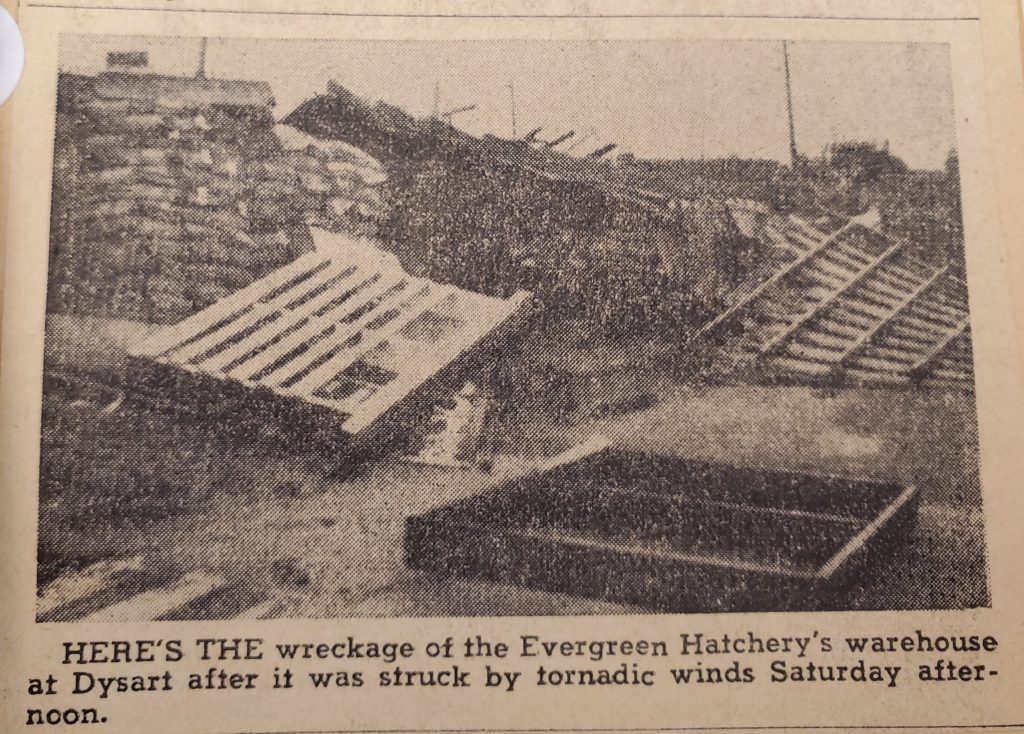
The hatchery suffered considerable loss on the building and contents stored there. At the hatchery plant, an auxiliary generator again kept the incubators going during the 12-hour period of power outage.”
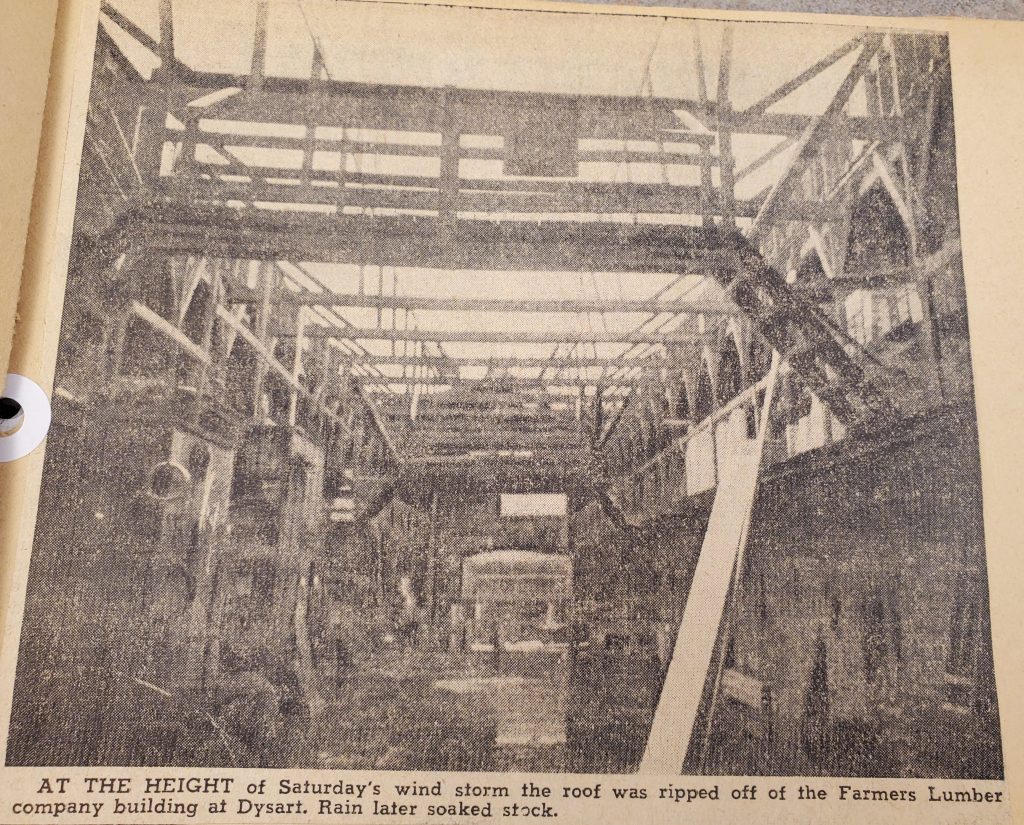
Cedar Rapids Gazette June 2, 1958
“Next in line was the build building of the Farmers Lumber Company. The west driveway door was ripped off and flung a block east near the D-X bulk storage tanks. About four-fifths of the roof was striped away and dumped helter-skelter over a wide area.
Evidence of the storms might was a heavy hog ringing chute which stood on the south side of the lumber yard. It was whirled through the air until it struck the side of the Evergreen Elevator office, leaving red paint marks for a trail, then carried on 20 0r more yards to the north. Two large portable hog houses were shattered.
Manager R.L. McMurray had a crew of about 20 men at work Sunday laying a new roof to protect the contents of the yard from rain. ‘I was really sick,’ he said, ‘when I saw the damage.’ The wind freakishly burst downward through the ceiling tiles of the office, then pushed the scale window out. In the path of all this, not a paper on the office desk was moved.”

Cedar Rapids Gazette June 2, 1958
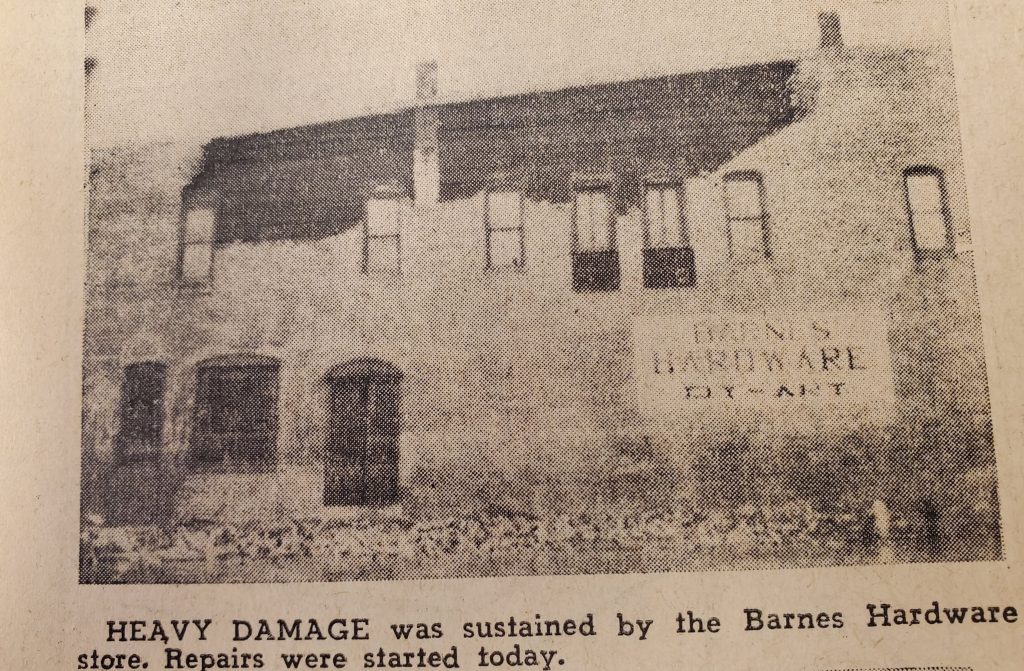
“The large neon sign atop the Evergreen Elevator office was bent double. Across the street, a gaping hole was torn in the roof of the coal sheds of the Townsend-Merrill company. The Barnes Hardware building badly damaged in the 1957 tornado, suffered again. A gaping hole was gouged in the brick wall of the building along east Wilson street. The cap on the false front of the Village Inn was raised. The decorative brickwork atop the three-story Keidel building was pushed backward onto the roof.”

More Damage As The Storm Leaves Town
The north edges of Dysart was badly bruised. A new double garage built by Richard Bednar was demolished. A tile workshop behind Bill Mattheisen home collapsed. The garage went down at the Ray Larsen home. The porch of the Mrs. Mary Barta residence was severely damaged by a falling tree.
There was damage in south Dysart also. A branch from a tree in the high school yard was flung against the John Theile home to rip away siding. Trees fell at the Dick Moeller, John Loeb, D.C. Wunder, Herman Lenaburg, Rev. J.E. Albertson, Leonard Siemens homes. Harland Downs lost his garage and William Hilmer’s car was damaged when the garage tumbled around it. ”

Cedar Rapids Gazette June 2, 1958
